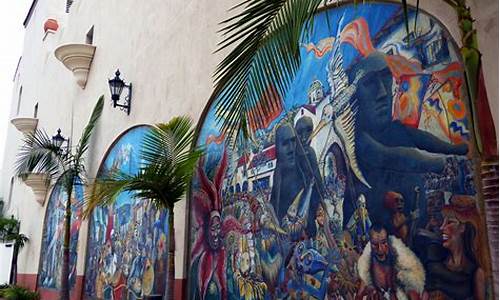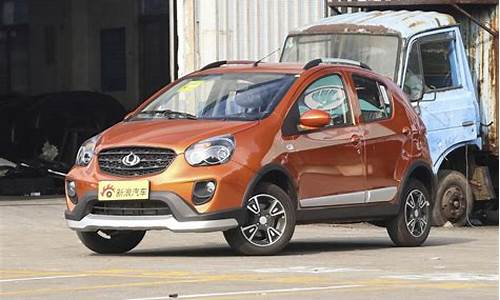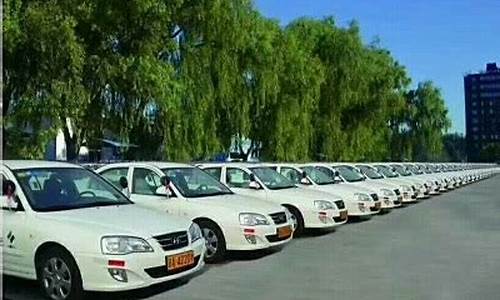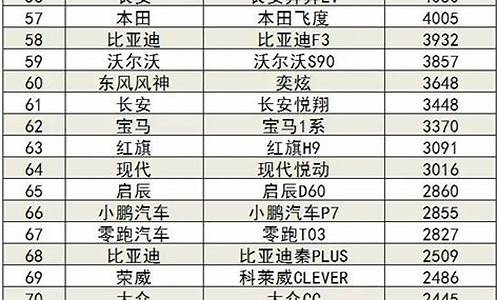mural和fresco的区别_fresco和glide的区别
1.壁_的网络解释壁_的网络解释是什么
2.优质英文导游词范文五篇
3.武汉大学城市设计学院 艺术设计系统 数码设计专业 导师是谁?

楼主,句子没主语哦,我用I代替了
I am of seven-year experience of architectural design,including some rich experience of interior decoration.I own enough team leadership and I once lead group of five to ten people.I he certain knowledge of fresco design and furniture design.
希望能帮上你喔!!!!
壁_的网络解释壁_的网络解释是什么
popular wall drawings
墙报是wall newspapers;壁画是:mural或fresco;为了有别于壁画,又能与墙报对应,wall drawings就因运而生。
优质英文导游词范文五篇
壁_的网络解释是:壁画壁画:建筑物附属部分壁画:杨国鹏全新创作歌曲壁画:[匈]萨博·玛格达所著书籍。
壁_的网络解释是:壁画壁画:建筑物附属部分壁画:杨国鹏全新创作歌曲壁画:[匈]萨博·玛格达所著书籍。结构是:壁(上下结构)_(上中下结构)。拼音是:bìhuà。
壁_的具体解释是什么呢,我们通过以下几个方面为您介绍:
一、词语解释点此查看详细内容
壁画bìhuà。(1)绘在墙面上的画。
二、国语词典
画在墙壁上的画。词语翻译英语mural(painting),fresco德语Wandmalerei(S)法语peinturemurale,fresque
关于壁_的成语
壁上观隔壁听话面壁磨砖从壁上观冷窗冻壁断垣残壁穿壁引光半壁河山面壁功深破壁飞去
关于壁_的词语
半壁河山杜门面壁穿壁引光断壁颓垣破壁飞去日月合壁冷窗冻壁从壁上观面壁功深飞沿走壁
点此查看更多关于壁_的详细信息
武汉大学城市设计学院 艺术设计系统 数码设计专业 导师是谁?
随着我国旅游行业的快速发展,越来越多的外国友人到我国旅游,所以在我国旅游可持续发展进程当中英语导游十分重要。下面是我精选的关于英文 导游词 范文 五篇,仅供参考,希望能帮助到大家!
英文导游词篇一:云南
Welcome to Yunnan, Welcome to Tengchong! It?s my honor to be your guide. Today we are going to visit the volcanoes and hot springs in Tengchong, which are the most famous here.
As we will get there in a few minutes, first allow me to give you a brief intoduction of Tengchong. Tengchong is located in the southwest of China and occupies an area of 5800 square kilometers. There are 23 nationalities here, such as 汉、傣、回、白 nationalities and so on. When we mentioned Tengchong, three things will come into mind, which are: the volcanoes and hot springs hing 10,000 years, the border city hing 1,000 years and the fair of jade hing 100 years.
Later we will get to the volcanoes and the hot spring, so now I can tell you something about the latter two ones. They all can reflect the long history Tengchong has. Tengchong is a city on boarder. And because of its location, it has been an important place for military reasons. And that?s a part of its history. It?s also regarded as the county of manners, and it is the hometown of so many famous people. And another part of its history is that Tengchong is one trade center of jade between China and Burma. So don?t forget to get a round to the jade fair. I think you will feel interested.
OK, everyone, here is the Library of the Volcanoes. Now let?s he a look at .The volcanoes in Tengchong are famous in China, and it?s one of the four groups of volcanoes in China. The strong extrasations are the cause of the landform of Tengchong. There is a lieder in Tengchong saying that:” Such a place Tengchong, nine in ten mountains he no peaks.” It?s very vivid, from that you can see so many volcanoes are in Tengchong. There are volcanoes in Tengchong now with high value of tourism and scientific research.
英文导游词篇二:重庆
Evening Scenes of Chongqing
The Red Star Pilion in the Pipasha Park, the Kansheng Pilion in the Eling Park, and a place called Yikeshu on the Nanshan Mountain are vintage points for observing the nocturnal scenes of the mountain city of Chongqing. At night the entire city is inundated in an ocean of lights, which form a colorful three-dimensional painting, with wes of the Yangtze and Jialing rivers glistening against the moonlit, star spangled sky.
Sites of the Provisional Capital
Chongqing figured importantly in modem Chinese history. During the War of Resistance against Japan, it was the "provisional capital" of China under the Kuomintang rule from November 1937 to October 1945. Vestiges of that period are still there in and around the city. These include the Red Crag Village and 50 Zengjiayan, as well as Chiang Kai-shek's mansion, Guiyuan Garden, Linyuan Garden, and the mansion of C.C. Kong, the embassies of various countries to China, as well as former residences of important politicians, generals and cultural figures.
Martyrs' Mausoleum at Mount Gele
The former headquarters, radio station and prison of the Bureau of Investigation and Statistics of the Military Council (a colossal secret service of the Kuomintang) at the foot of the Gele Mountain in Shapingba District he become the mausoleum for those who died a martyr's death there in China's dark days. In the dying years of World War 11, it was the site of the "Sino0US Institute for Cooperation in Special Technology".
Dazu Grottoes
The Dazu Grottoes in the county of the same name is best known for the stone carvings on the Baodingshan and Beishan mountains, which are fine example of grotto sculpture in the late years of Chinese feudalism. The sculptures, done in fastidious chisel work and gracious imagery, are marked by a new sculptural language that eschews religious taboos and espouses true life.
Yangtze River's Three Gorges
Sailong down the Yangtze from Chongqing to Yichang allows visitors to see the spectacular scenery of the Three Gorges along with its splendid cultural heritage and fabled local folklore. The cruise, which combines sightseeing with scientific, artistic and folklore exploration, is a national-caliber tourist program. The 193-km-long Three Gorges, consisting of the majestic Qutangxia, statuesque Wuxia and ferocious Xilingxia gorges, is one of and ferocious Xilongxia gorges, is one of the world's major canyons. Along the way there are such scenic attractions as the Fengdu Mountain. Baidi city, Shibao village, Zhang Fel's Temple, Qu Yuan's Temple, and the Three Gorges Dam.
Lesser Three Gorges
The Daning River is the largest Yangtze tributary, which rises in the southern side of the Daba Mountain and flows for 250km before emptying itself into the Yangtze at the western entrance to the Wuxia Gorge. The Lesser Three Gorges on the Daning River, a 50km-long affair covering the Longmenxia, Bawuxia and Dicuixia gorges in the lower reaches of the river, is billed as one of China's 40 best scenic resorts thanks to its gorgeous mountains, elegant peaks, turbulent rapids, limpid water, exotic rock imagery and serene scenery.
Diaoyu City, Hechuan
Established in 1242, or the 2nd year of the Chunyou reign of the Southern Song, Diaoyu City covers 2.5 square km up the Diaoyu Mountain on the southern shore of the Jialing River in Hechuan City's Heyang Town. In 1258, the Mongols launched a three-way attack on the Song, and in February the next year Diaoyu City found itself besieged. The Song army mounted a valiant counterattack that last3ed for 36 years, and made world war history by rebuffing a strong enemy with a weak force. This prompted some European historians to laud Diaoyu City as the "Mecca of the East" and "Where God broke his whip". The ruins of the ancient battlefield of Diaoyu City are well kept there.
Jinyun Mountain
Nicknamed "Less Mount Emei", Jinyun Mountain is a national scenic resort 55km from downtown Chongqing.
Furong Ce, Wulung
The Furong (Hibiscus) Ce is located by the Furong River in Wulung County. The main part of the ce is 2,700 metres in length and 3.7 square metres in area. The Splendid Ce is the most impressive. Housed in it are nearly 30 varieties of stalactites chiseled into every manner of exotic imagery by the cunning labor of nature. Major attractions are Gold Throne Hall, Leifeng Pagoda and Sky-reaching Jade Pillar.
英文导游词篇三:玉龙雪山
Locating between 10004?-10016?east longitude and 2703?-2740? north latitude, Jade Dragon Snow Mountain (Yulong Mountain) is the southernmost glacier in the Northern Hemisphere. Consisting of 13 peaks, among which Shanzidou is the highest one with an altitude of 5,600 meters (18,360 feet), Jade Dragon Snow Mountain stretches a length of 35 kilometers (22 miles) and a width of 20 kilometers (13 miles). Looking from Lijiang Old Town in the south which is 15 kilometers (nine miles) away, the snow-covered and fog-enlaced mountain resembles a jade dragon lying in the clouds, hence, the name Jade Dragon Snow Mountain.
According to the geologists? research, for about 400 million years the area around Jade Dragon Snow Mountain was the ocean and it was during the last 600 thousand years that the different landscapes had come into being because of the uprising of the lithosphere. Archaic legend about this mysterious and beautiful snow mountain goes like this: Once upon a time, Jade Dragon Snow Mountain and Haba Snow Mountain were twins. They had lived on panning in Golden Sand River until one day an evil fiend usurped the river. The brothers were very bre and had a fierce fight with the fiend, Haba died in the fight and Jade Dragon drove off the fiend after wearing out 13 swords. For guarding the people and preventing the return of the fiend, Jade Dragon held the 13 swords in hands day and night. As time passed, the brothers had turned into the two snow mountains, and the 13 swords had become the 13 peaks. Jade Dragon Snow Mountain is a holy mountain for the local Naxi people not only because of the legend, but also because long time ago, it was a place for young lovers to sacrifice their young lives in honor of true love and to escape from the arranged marriages and feudal ethics.
Jade Dragon Snow Mountain is a sanctuary for rare animals and wild plants. In fact, one fourth of all plant species in China can be found here and 20 primeval forest communities shelter a big family of 400 types of trees and 30 kinds of animals which are protected by the state. These species live in different temperature levels and create different kinds of views of Jade Dragon Snow Mountain. The 13 peaks, which he the altitudes of at least 4,000 meters, are covered by snow all year round; the mountain is called the "Natural Glacier Museum" for it has all types of glacier. Move down from the mountaintop and you can see rivers and pools, which are formed by the thawed snow water running along the valley and through the forests. The plants and the animals are different according to the altitude, so are the views. Every sight brings you a surprise and every step takes you to a new scene. Each of the meadows on Jade Dragon Snow Mountain has its own special character due to their different landscape and height. For instance, Yunshanping (Spruce Plateau) is grassland with gigantic spruces whilst Ganhaizi (Dry Sea) used to be a highland lake as its name tells, the meadow was formed after the water had dried up. Jade Dragon Snow Mountain now is a famous scenic spot for sightseeing, mountaineering, skiing, exploration, scientific research and taking holiday. Besides, widespread legends and myths of the Naxi ethnic minority and the unclimbed Shanzidou are all important attractive spots for those who come to Jade Dragon Snow Mountain.
英文导游词篇四:丽江壁画
Ten kilometers (six miles) northwest of Lijiang Old Town, there are several ancient villages, including Baisha, Dayan, Shuhe, Yangxi and Xuesong. There, the invaluable Lijiang Mural is stored, preserved and displayed in 15 venerable temples, such as Juexian, Wande, Guiyi temples and Sanbi Garden. Altogether, the mural used to include more than 200 pieces of fresco. However, hundreds of years of historical vicissitudes he left only 55 pieces in good condition. The most famous frescos are known as Baisha Mural of the Dabaoji (Great Treasure) Palace and the Colored Glaze Temple (Liuli Dian) in the town of Baisha.
Most of the temples were built from the early days of the Ming Dynasty (1368-1644) to the early Qing Dynasty (1644-1911), and the Lijiang Mural was created at the same time, over the course of about 300 hundred years. In Lijiang, it was an era of rapid economic development, mutual acculturation of multinational culture, and the growth of religions. Accordingly, Lijiang Mural was an artistic representation of this cooperation, communication and progress. The authors of these mural paintings had come from different nations, including the local Naxi Dongba painters; the Taoist painter Zhang from the Central Plain; an Lama artist Guchang; Han painters Ma Xiaoxian and Li Zeng; and many other artists who were unknown to the public
The originality and figures of the mural paintings reflect the different religious cultures and artistic forms of Buddhism, Lamaism, Daoism and the Naxi Dongba religion, as developed in a Naxi school. Therefore, Lijiang Mural is quite different from other frescos. Each painting includes at least one hundred portraits, but perspective is used very well, and the close, middle and establishing images are clear. The various lifelike portraits are not only Buddhas but also ordinary people such as bureaucrats, criminals, tourists and executioners. Many of the scenes and subject matters are drawn from daily life-people are shown fishing, riding horses, weing, dancing and casting iron. The painters used different methods of portrayal within the different elements of the fresco, such as flesh, garments, jewelry, weapons and many other components. The style of these true-life frescos is rural and unconstrained; the colors are strong and he intense contrast but are also unified. The Lijiang Mural fully demonstrates the superb artistic skills, outstanding creativity and rich imaginations of these excellent craftsmen. The vivid and exact figures, flowing lines, well-defined colors and powerful effects of the exquisite details make the Lijiang Mural not only the rare treasure of art, but also forceful proof of national solidarity and an important source of information for research on national religions, arts and history.
英文导游词篇五:平遥古城
Ladies and gentlemen, this time we are going to visit the famous Pingyao County. Pingyao County is one of the cultural heritages of the world heritage list. Please keep the floor clean during the tour. If you he any questions, you can ask me. We first came to the first tourist spot: South Street. The composition of Pingyao County is crisscrossed four streets, eight small streets, seventy-two winding streets, and now we come to the South Street of four Avenue. You see, on both sides of the street, old and famous shops are flourishing traditional commercial streets. During the Qing Dynasty, South Street controlled more than fifty percent of the financial institutions in the country. West Street is known as "the first street of Finance in Qing Dynasty", and it is a main street directly connected with East Street. And the East Avenue North and South Street intersection, North Street is to the west central street. Eight small streets and seventy-two lanes are named in the nearby buildings or marked signs; some are named in the temple temple; some are named in a city in the city; and some streets and lanes he been unable to explore the source of the name. There are many beautiful legends in Pingyao County, such as sleeping aunts and drug wives, and burning Town God's Temple. Please take a good tour of this beautiful ancient city.
武汉大学城市设计学院导师 -----程世丹。
武汉大学艺术学系导师:-----汪余礼。
夏丽君****
E-Mail:
通信地址:
武汉大学工学部一号教学楼15层城市设计学院设计系430072
教育
武汉大学WuhanUniversity:博士在读(科学社会主义,研究方向为当代艺术思潮)
Ph.D(continuing).inScientificSocialism:ContemporaryArtTrends,Wuhan
硕士(设计艺术学)
2004,MasterofArtsofDesign
中央美术学院CentralAcademyofFineArts:美术史系研究生班1990,postgraduatecoursesofFineArtHistoryCollege,Beijing
湖北美术学院HubeiAcademyofFineArts:学士(美术教育)1985,BachelorofFineArtEducation
法国布尔日国立高等美术学院BourgesEcoleNationaleSupérieured'art,France:2004.1-2004.4(访问学者)VisitingScholar,
教学与研究方向
艺术设计公共艺术美术理论与评论
ArtDesign,PublicArt,ArtTheoryandComment
专业资质
工作经历
1.武汉水利电力大学,中国湖北武汉(1985-2000)
WuhanWaterResourcesandPowerUniversity
2.武汉大学城市设计学院设计艺术系,中国湖北武汉
副教授(2000-至今)系主任(2001-2005)副系主任(2011-至今)
WuhanUnversity
荣誉、获奖和奖学金
1.武汉大学城市设计学院副教授;
AssociateProfessorofUrbanDesignCollege,WuhanUniversity
2.湖北省美术家协会会员
MemberofArtistsAssociationofHubeiProvince.
3.湖北省美学协会理事
ThedirectorofAestheticsAssociationofHubeiProvince
4.湖北省美育学会理事
MembersofAestheticEducationAssociationofHubeiProvince
5.湖北科技美术指导委员会理事
MemberofHubeiScienceTechnologyandFineArtSteeringCommittee
6.湖北省高等教育学会艺术设计专业委员会理事。
MembersofArtDesignInstituteofHubeiProvinceHigherEducationCommittee.
7.作品入选第九届全国美展和省展
Workswereselectedintothe9thNationalArtExhibitionandtheechibitionsheldinHubeiprovince.
8..获湖北省高校教师书画展金奖
Thegoldawardof“TheCalligraphyandPaintingExhibitioncollegeforTeachersinHigherEducationSchools”.
9.中国之星设计艺术大奖最佳设计奖,北京,2005
Thebestdesignawardforthe“2005ChinaStarDesignArtAward”
10.湖北省第十二届《楚天创新奖》铜奖,武汉,2005
Thebronzeawardofthe12th"ChutianInnovationAward",2005,Wuhan
11.第十一届中南星奖设计艺术大奖赛铜奖,广州,2005
Thebronzeawardforthe11th“DesignArtCompetitionofCentralSouthStar“BronzeStar,"2005,Guangzhou
12.论文《对工业设计教育的思考》获2005年度武汉大学优秀教学论文三等奖
Paper"OntheIndustrialDesignEducation"wasWontheThirdPrizeoftheOutstandingTeachingofWuhanUniversityin2005
13.论文《企业思想政治工作与CI战略初探》获湖北省高等学校美术教育论坛三等奖(2003)
Paper"IdeologicalandpoliticalworkwithCIStrategy"WontheThirdprizeofHubeiHigherEducationForum,FineArts(2003)
14.湖北省科技美术设计展铜奖,武汉,2002
Thebronzeawardof”HubeiScienceandTechnology,ArtandDesignExhibition“
出版情况
PublicationsandExhibition出版物和展览
1.论文《对工业设计教育的思考》辑入《2005当代工业设计教育纵横》(机械工业出版社、2005)
夏丽君,Paper“OnIndustrialDesignEducation”CollectedintoAspectofContemporaryIndustrialDesignEducation",MechanicalIndustryPress,2005
2.设计作品《石嘴山供电局VI》辑入《装饰》杂志(清华大学出版社、2004)
夏丽君,Thedesignwork,"ShizuishanPowerSupplyBureauVI"seriesintothe"decoration"magazineTsinghuaUniversityPress,2004
3.设计作品《荆城供电局标志》辑入《湖北省高等学校美术大展优秀美术作品选》(湖北美术出版社、2004)
夏丽君,Thedesignwork,"JingCityPowerSupplyBureausigns"seriesin"ExcellentHubeiFineArtsCollegeFineArtsExhibitionofSelectedWorks",HubeiFineArtsPublishingHouse,2004
4.设计作品《石嘴山供电局标志》辑入《湖北省高等学校美术大展优秀美术作品选》(湖北美术出版社、2004)
夏丽君,Thedesignwork,"ShizuishanPowerSupplyBureausigns"seriesin"excellentHubeiFineArtsCollegeFineArtsExhibitionofSelectedWorks",HubeiFineArtsPublishingHouse,2004,Hubei
5.壁画《人类文明的史诗》参加首届全国壁画大展(北京、2004)
夏丽君,Fresco,"TheEpicofHumanCivilization,"ParticipatedintheFirstNationalMuralExhibition2004,Beijing
6.壁画《人类文明的史诗》辑入《美术博览》(中国文联出版社、2003)
夏丽君,Fresco,"TheEpicofHumanCivilization,"collectedinthe"ArtExpo",ChinaFederationofLiteraturePublishingHouse,2003
7.壁画《世界文明》参加第七届全国美展、第七届湖北省美展(2003)
夏丽君,Fresco"WorldCivilization"Participatedthe7thNationalArtExhibitionand7thArtExhibitioninHubeiProvince,2003
8.论文《企业思想政治工作与CI战略初探》辑入《湖北省高校美术与设计及论文论坛》(湖北科技出版社、2003)
夏丽君,Paper"IdeologicalandpoliticalworkwithCIStrategy"Seriesin"ArtandDesignUniversityinHubeiProvinceandPapersForum",ScienceandTechnologyPress,2003
9.参与编写《美术高考应试指南》(湖北美术出版社、2002)
夏丽君,Inthepreparationof"artcollegeentranceexamguide",HubeiFineArtsPublishingHouse,2002RefereedArticles发表论文
1.“AnalysingtheApplicationsofvirtualspaceforartinbookdesign";
Publishedinthe"PackagingEngineering",partofVisualCommunicationDesign,thesection08,2011,
夏丽君,王迪,2011,《论虚空间艺术在书籍设计中的应用》;发表于《包装工程》2011年第08期,视觉传达设计栏目
2.“OperaCartoonPromotionStrategies-BasedonTheDesignManagementStrategies’PromotingResearch“Press:BeijingInstituteofTechnologyPress
夏丽君,朱俊波,2010,《京剧动漫推广策略的探析——基于设计管理策略的推广研究》;出版社:北京理工大学出版社;
3.“4PMarketingStrategyinTheOperaAnimationDesign";Publishedin"YoungWriters",04.2010
,戢运吉《营销4P策略在京剧动漫设计中的应用探析》;《青年文学家》,2010.4
4.“CulturaltrendsoftheChinesedesigninGlobalization”,PublishedinTheChineseForumonIndustrialDesignof2009
夏丽君,朱俊波,2009,《全球化语境下华人设计的文化趋向分析》,发表与2009年世界华人工业设计论坛;
5.”KcanseeEngineeringAppliedInHuman-ComputerInteractionDesign”,Publishedinthe10thIEEE,InternationalComputerAidedIndustrialDesignandConceptualDesignConference“E-BusinessCreativeDesignManufacturing-CIAD&CD’2009”;
夏丽君,朱俊波,2009,朗读《发表于2009IEEE第十届国际计算机工业设计与概念设计学术会议,EI检索.
6."RoleSettingandProductionProcessofIllustration”;"ArtEducationandQualityEducationForum"PublishedinCentralChinaNormalUniversityPress,01,2009夏丽君,张姝娴《插画的角色设定与制作过程》;“艺术教育与素质教育论坛”华中师范大学出版社2009.1
7..”TheExploreofElders’ScientificandTechnologicalPanic”2008ChinaInternationalIndustrialDesignForum&The13thChinaIndustrialDesignAnnualMeeting12,2008,;
夏丽君,丁中山,“TheExploreofElders’ScientificandTechnologicalPanic’,发表于2008国际工业设计研讨会暨第十三届全国工业设计学术会议论文集
8.”ThePreliminaryStudyAboutWuhanCtyCircleDoorNumberCardsDesign"
夏丽君,丁中山,发表论文《武汉城市圈门牌设计方案初探》发表于《素质教育与艺术教育》(华中师范大学与湖北省教委联合出版)2008.10
9.“UrbanTransportSystemofYichang,Qinhuangdao,andDalian”,Publishedin“WuhanUniversityAcademicPapers”,3,2007
夏丽君,黎玉华,2007,发表论文《浅谈宜昌、秦皇岛、大连三个旅游城市的交通导向系统》,《武汉大学学报》2007,3
10."TheExplorationofAgingSocietyIdentificationsystem",Publishenin"WuhanUniversityAcademicPapers",3,2007
夏丽君,毛婷,2007,,发表论文《老龄化社会城市标识系统的探索》,《武汉大学学报》2007,3
学术报告
研究项目
湖北省高等人民法院文化建设(2010-2011)
CulturalConstructionofHubeiHigherPeople'sCourt,2010-2011
朗读
显示对应的拉丁字符的拼音
字典
中国银联湖北分公司九凤卡设计2009
The“NinePhoenixCard”DesignfortheUnionPayBranchinHubeiProvince,2009
武汉飞视通智能科技有限公司VI系列设计(2008)
SeriesVIDesignofWuhanFeiShiTongIntelligentTechnologyCo.,Ltd.
显示对应的拉丁字符的拼音
字典
武汉路安智能科技有限公司VI系列设计(2008)
SeriesVIDesignofWuhanluanIntelligentTechnologyCo.,Ltd.
朗读
显示对应的拉丁字符的拼音
字典
洗马河赛珠水电站引水隧洞及分岔管结构计算(2007)
TheXimahesaizhuHydropowerTunnelStructuralandBifurcationCalculation,2007
电源电涌保护箱外观设计(2006)
PowerSurgeProtectionBoxDesign,2006
荆州荆城供电局CI策划(2002)
CIPlanningofPowerSupplyBureauofJingzhouCity,2006
宁夏石嘴山供电局CI策划(2001)
CIPlanningofNixiaShizuishanPowerSupplyBureau,2001
沙市热电厂CI策划(2000)
CIPlanningofThermalpowerstationsinShashi
设计实践
社会服务
教学与指导工作
CoursesTaught讲授的课程
WuhanUniversity武汉大学
Sketch素描
·Enrollment:30
人数:30
Color色彩
·Enrollment:30
人数:30
PreliminaryDesign设计初步
·Enrollment:20
人数:20
Urban-orienteddesign城市导向设计
·Enrollment:20
人数:20
CreativedesignofAdvertisement广告创意设计
·Enrollment:6
人数:6
ContemporaryArtandDesign当代美术与设计
·Enrollment:10
人数:10
ColorTheoryandPractice色彩理论与实践
·Enrollment:20
人数:20
ContemporaryFineArts当代美术思潮
·Enrollment12
人数12
PublicArtProjectWork公共艺术专题创作
·Enrollment12
人数12
ProfessionalPractice专业实习
·Enrollment6
人数6
GraduationDesign毕业设计
·Enrollment30
人数30
Advising指导工作
NAME
学生姓名
DEGREESOUGHT
攻读学位
ROLE
承担工作
YEARSERVED
工作时间
CURRENT
Start
起
Finish
止
STATUS
目前从业情况
1.
许宁
硕士
MA
指导
Advisor
2002
2004
工作
Guangzhou
2.
成斌
硕士
MA
指导
Advisor
2003
2005
工作
SoutheastUniversity
3.
李冰洁
硕士
MA
指导
Advisor
2004
2006
工作
NanjingNormalUniversity
4.
毛婷
硕士
MA
指导
Advisor
2005
2007
工作
SouthwestPetroleumUniversity
5.
黎玉华
硕士
MA
指导
Advisor
2005
2007
工作
Shanghai
6.
丁中山
硕士
MA
指导
Advisor
2007
2009
工作
Shanghai
7.
张姝娴
硕士
MA
指导
Advisor
2007
2009
工作
UniversityofTechnology,Shanxi
朗读
显示对应的拉丁字符的拼音
字典
8.
朱俊波
硕士
MA
指导
Advisor
2008
2010
工作
PolicestationChongqing
9.
戢运吉
硕士
MA
指导
Advisor
2008
2010
工作
Shanghai
10.
张雪萌
硕士
MA
指导
Advisor
2009
至今
在读
Continuing
11.
王迪
硕士
MA
指导
Advisor
2009
至今
在读
Continuing
12.
查杨茜雯
硕士
MA
指导
Advisor
2010
至今
在读
Continuing
学生成果
李冰洁
作品参加奥地利维也纳“trickywomen国际动画艺术节”。2011
WorkswereparticipatedinVienna,Austria"TrickywomenInternationalAnimationFestival."2011
动画作品《vine》参展“trickywomen国际动画艺术节”之“madeinchina”展映环节。2011
Animationwork“Vine”participatedinthescreeninglink“madeinChina”of“TrickywomenInternationalAnimationFestival."2011
参与制作由中国科协、教育部、中国科学院共同建设的国家级科研项目——“中国数字科技馆”之“数码
图像工作室”项目,该项目已荣获“联合国世界信息峰会大奖”。2008
Involvedintheproject,productingbytheChinaAssociationforScience,EducationDepartment,andChineseAcademyofSciences,asanationalresearchproject-"DigitalImageStudio"ofthe"ChinaDigitalScienceandTechnologyMuseum".Theprojecthasbeenawardedthe"UnitedNationsWorldSummitAward."2008
丁中山
“武汉城市圈九城卡设计”入围奖;
"NinetownsCardDesignofWuhanCityCircle",FinalistAward;
朗读
显示对应的拉丁字符的拼音
字典
“武汉市花卉展示周”花卉设计三等奖”。
"WuhanCityFlowerShowWeek",FloralDesign,Thirdplace
张姝娴
第八届中国艺术节——全国大学生美术与艺术设计作品展”入围奖;
“The8thChinaArtsFestival-ArtandDesignExhibitionoftheNationalCollege"FinalistAward;
“天津(全国)大学生平面创意设计大赛”入围奖;
"Tianjin(China)CollegeGraphicDesignCompetition"FinalistAward;
荣获“2008届毕业生文化衫设计方案征集大赛”二等奖;
The"graduatesof2008,T-shirtDesignCompetition",secondprize;
武汉市绿化委员会组织的“和谐发展迎奥运---花卉展”三等奖;
“TheharmoniousdevelopmentoftheOlympics---FlowerShow“,thirdprize;
声明:本站所有文章资源内容,如无特殊说明或标注,均为采集网络资源。如若本站内容侵犯了原著者的合法权益,可联系本站删除。












